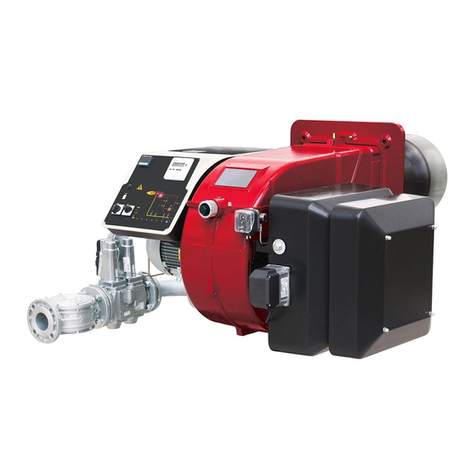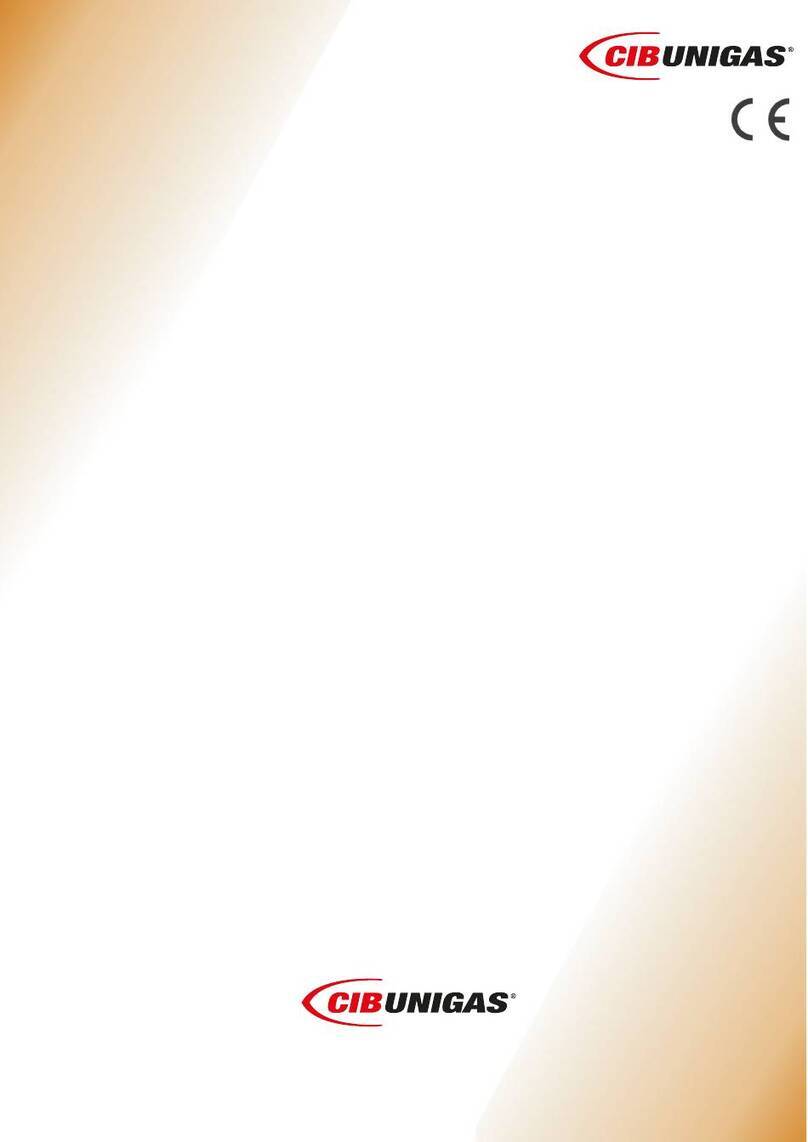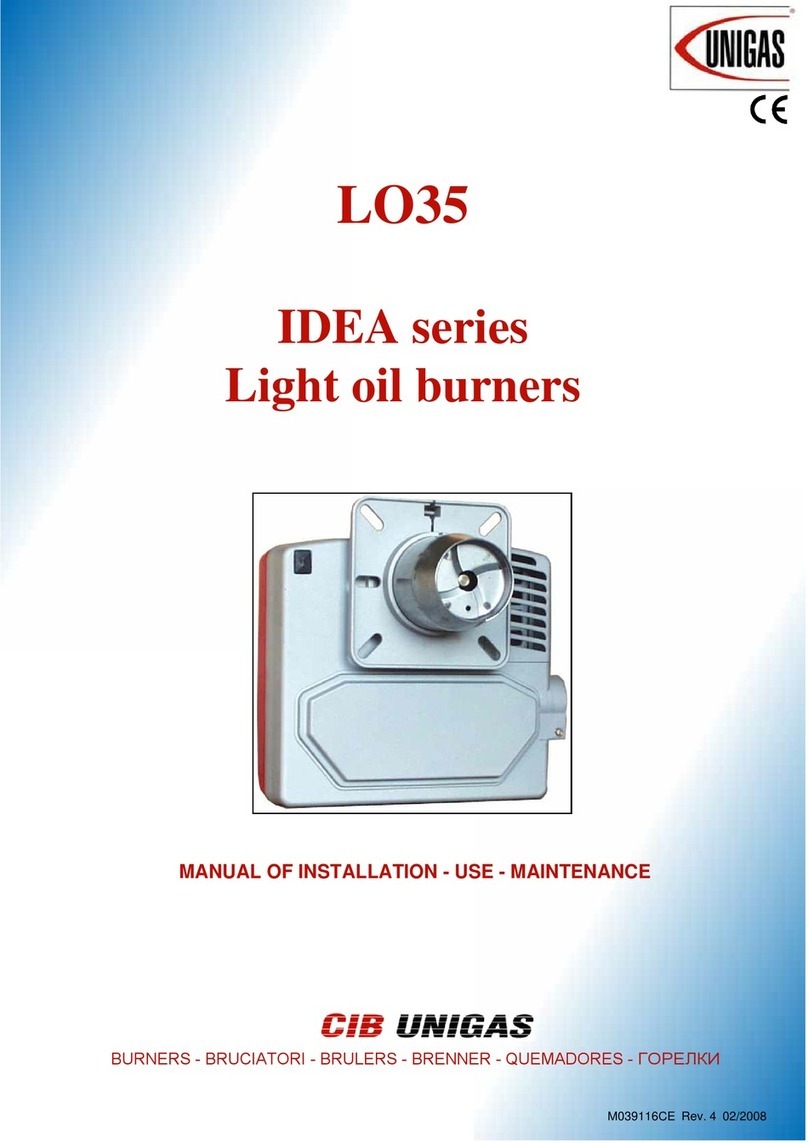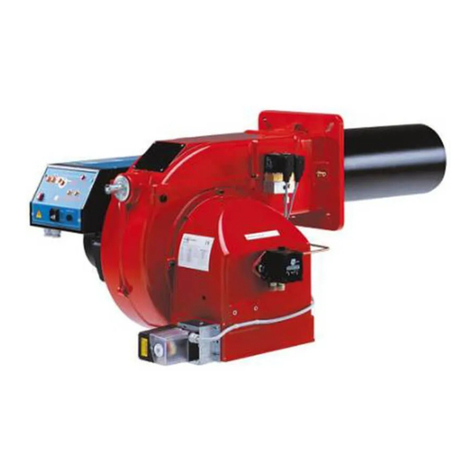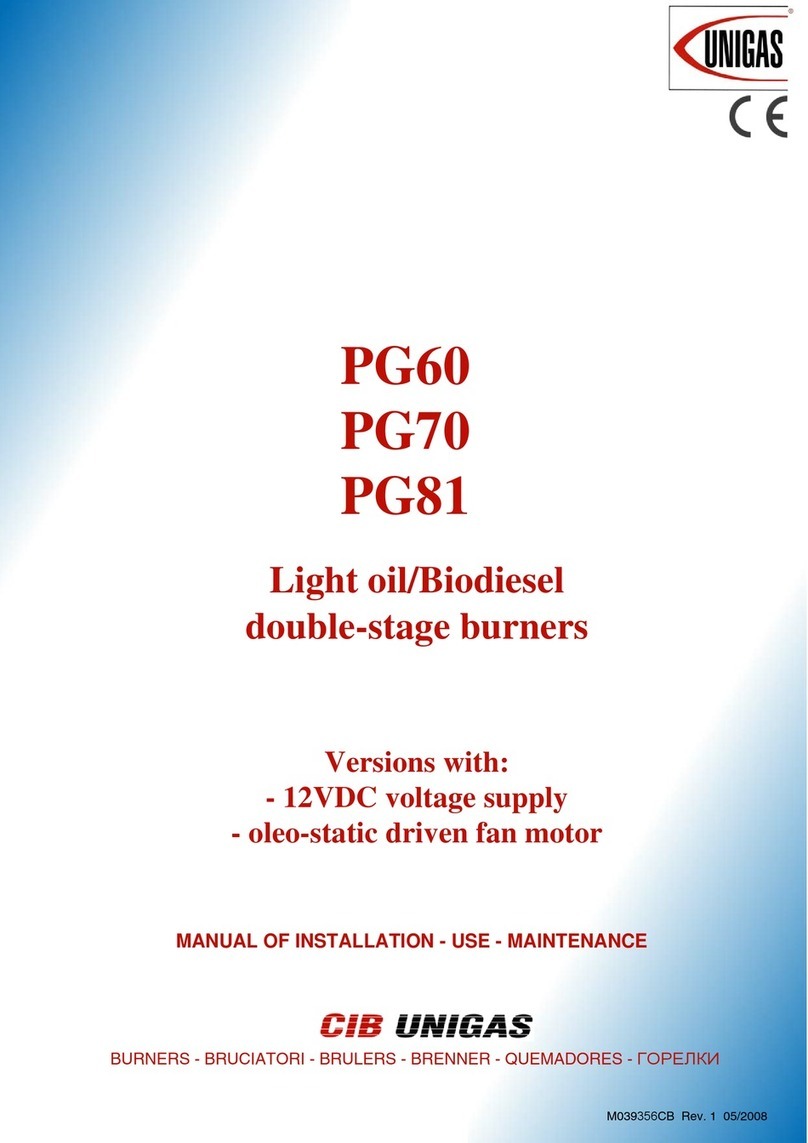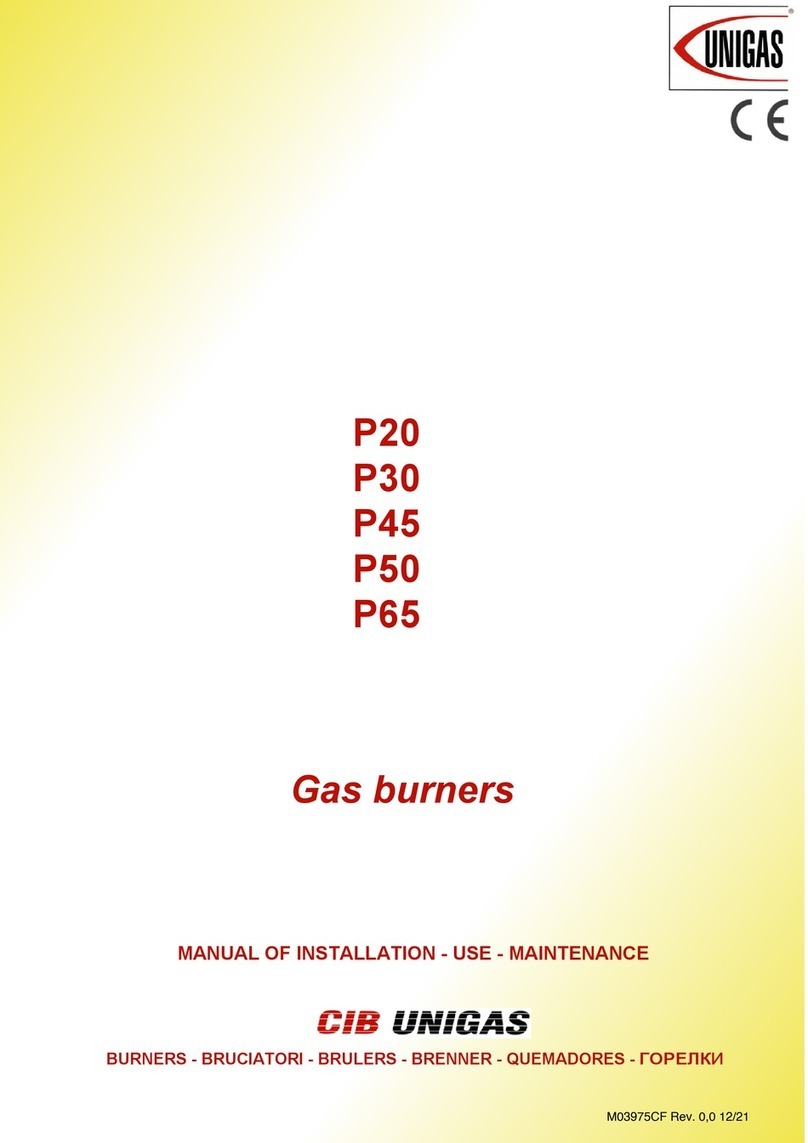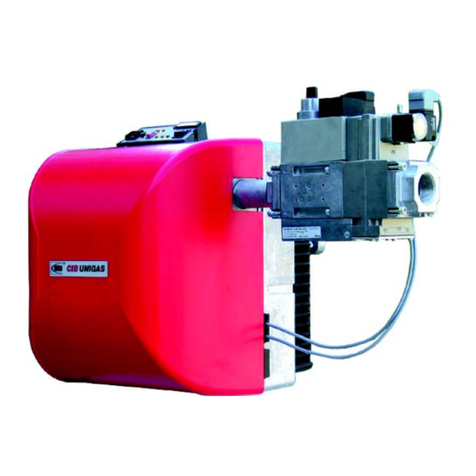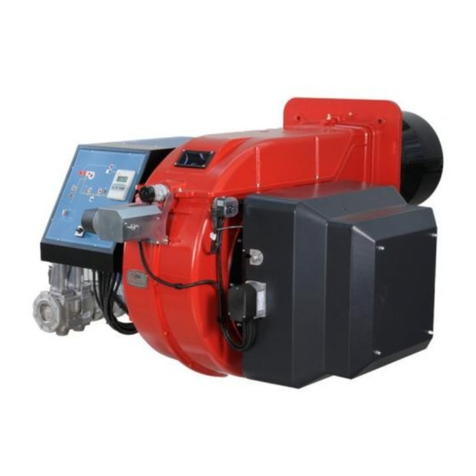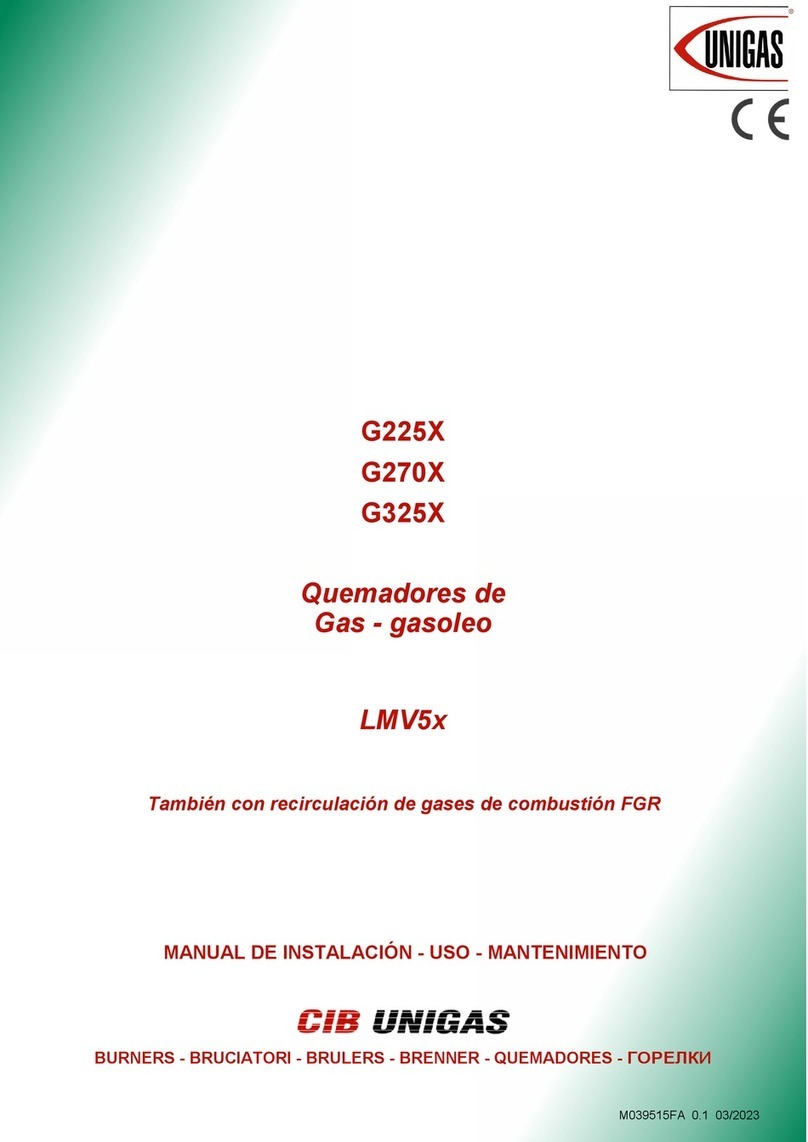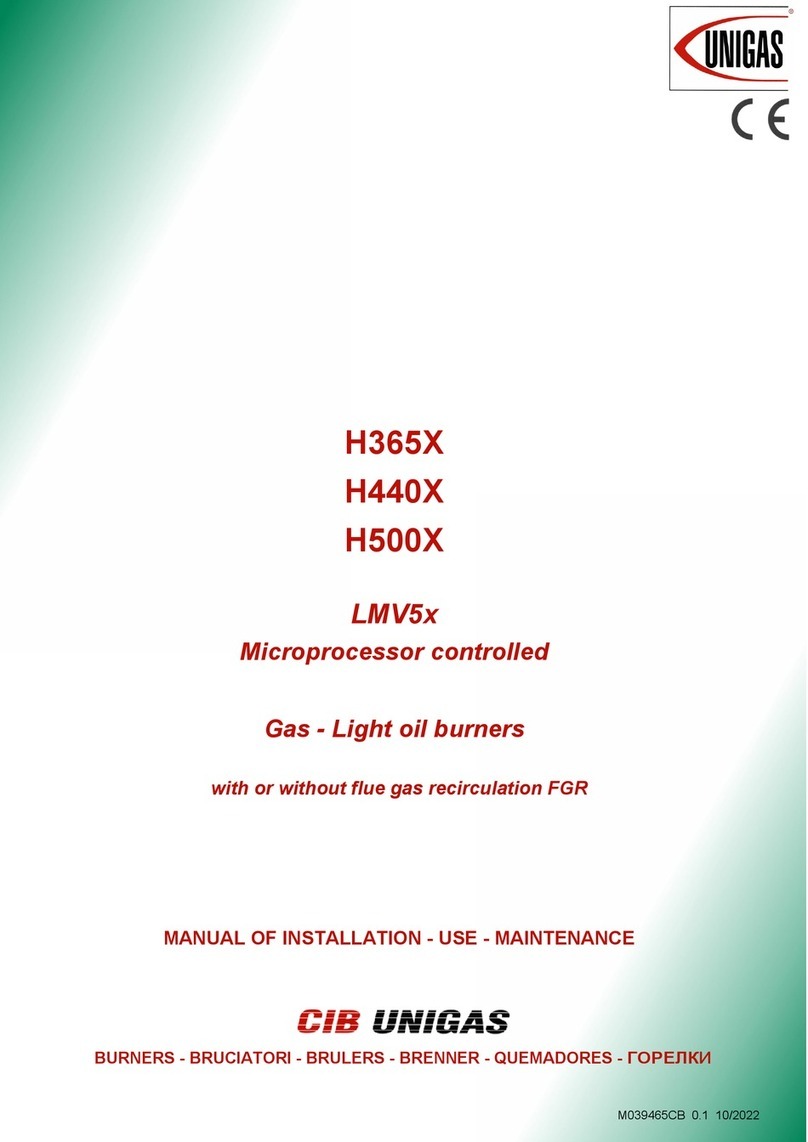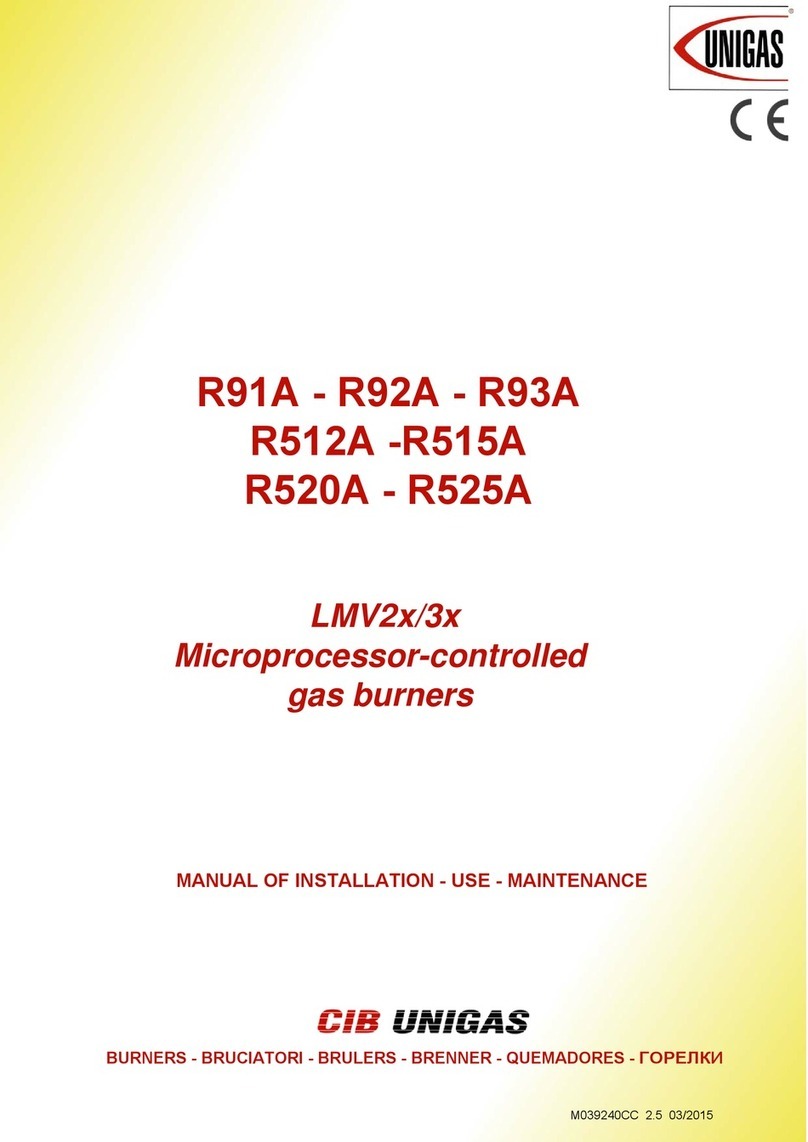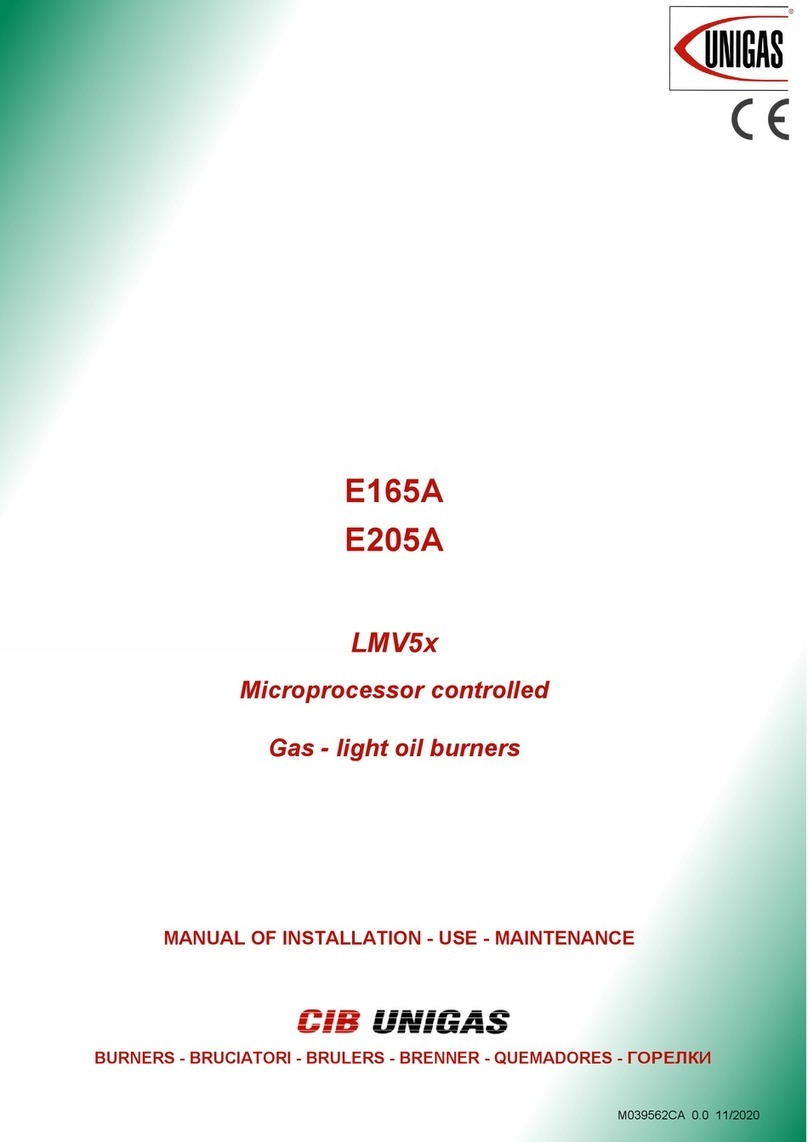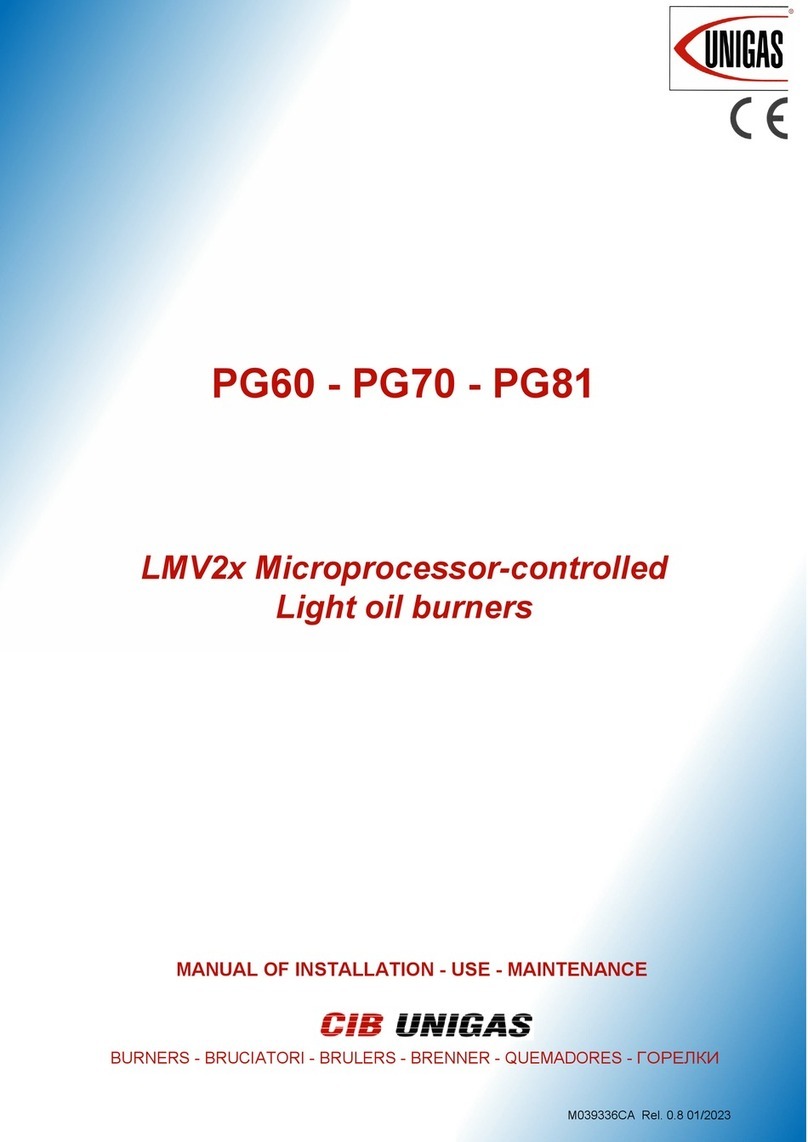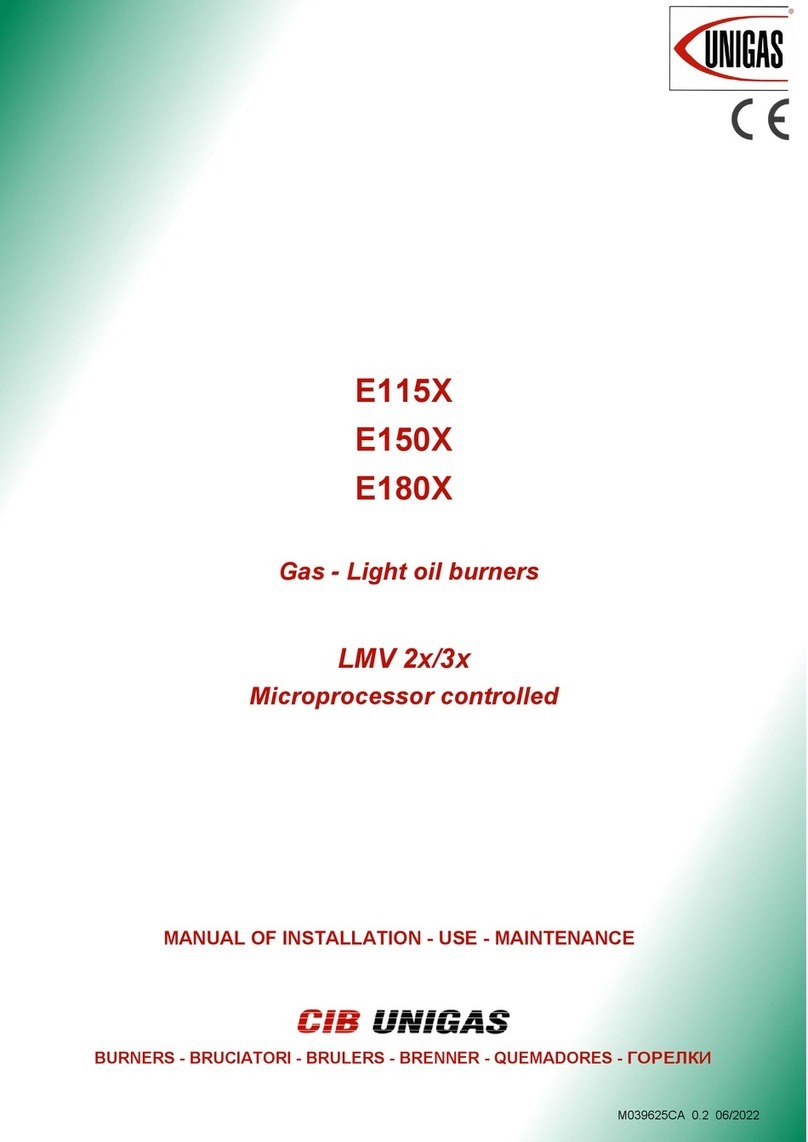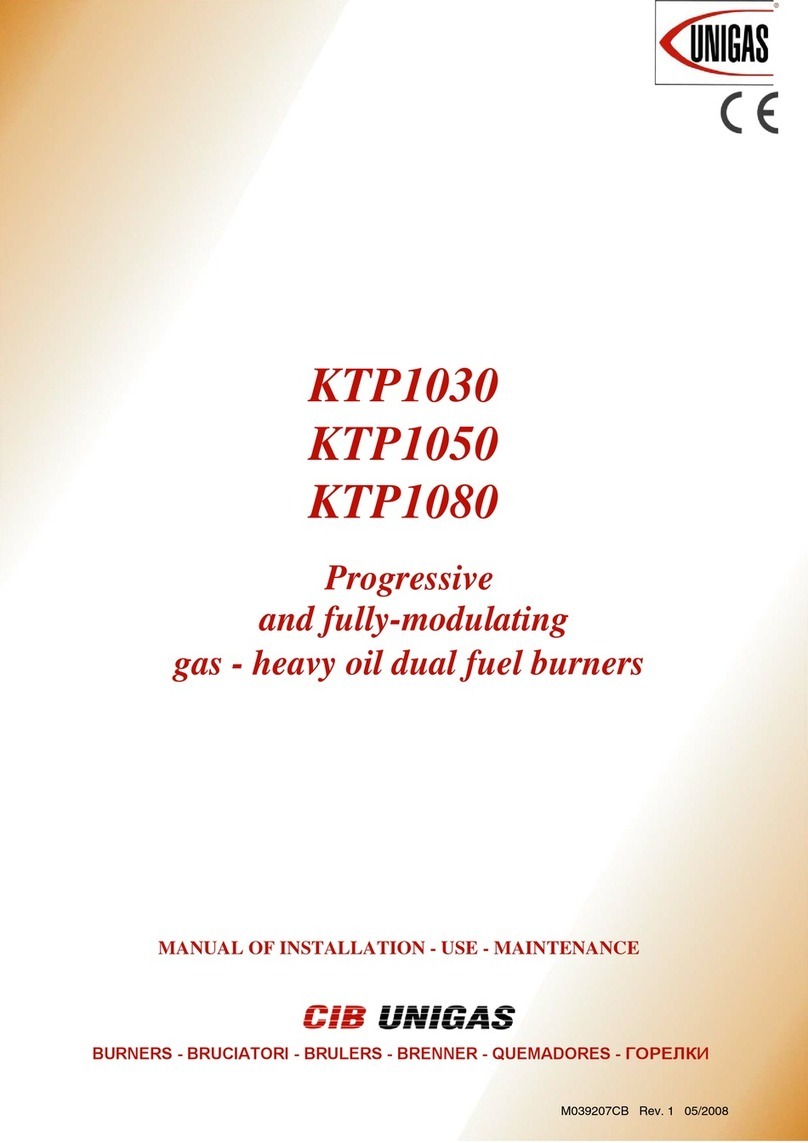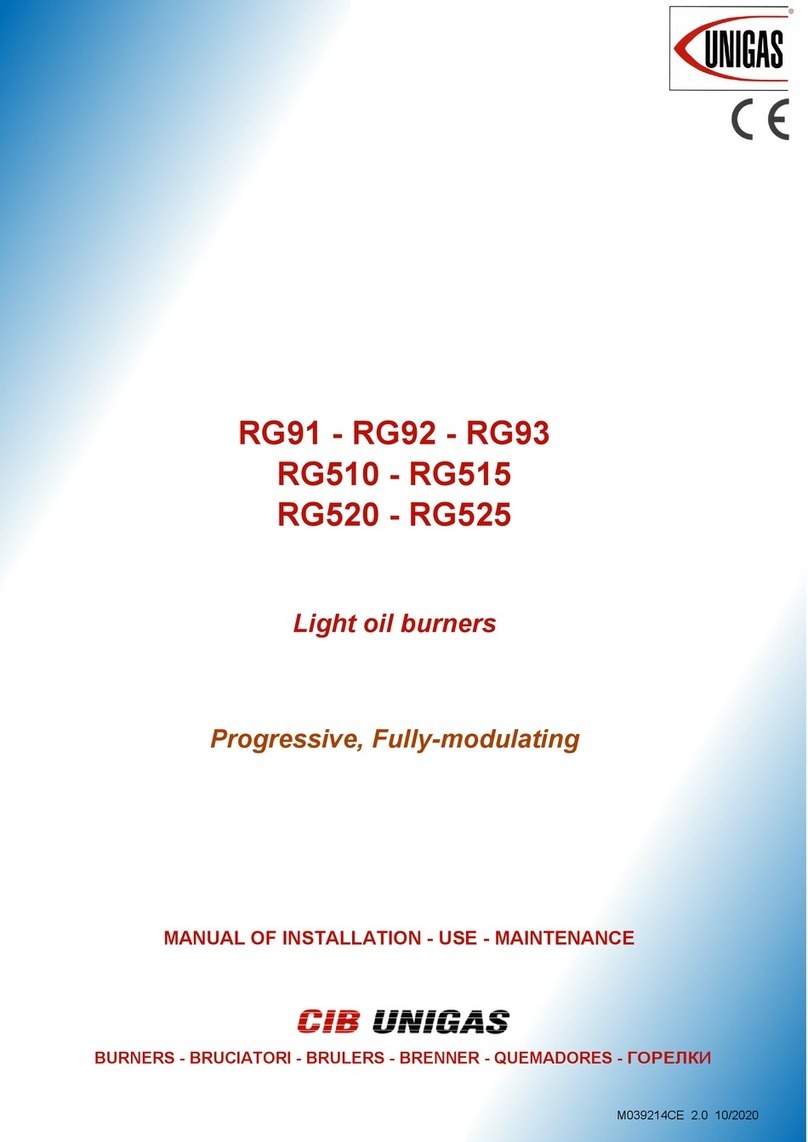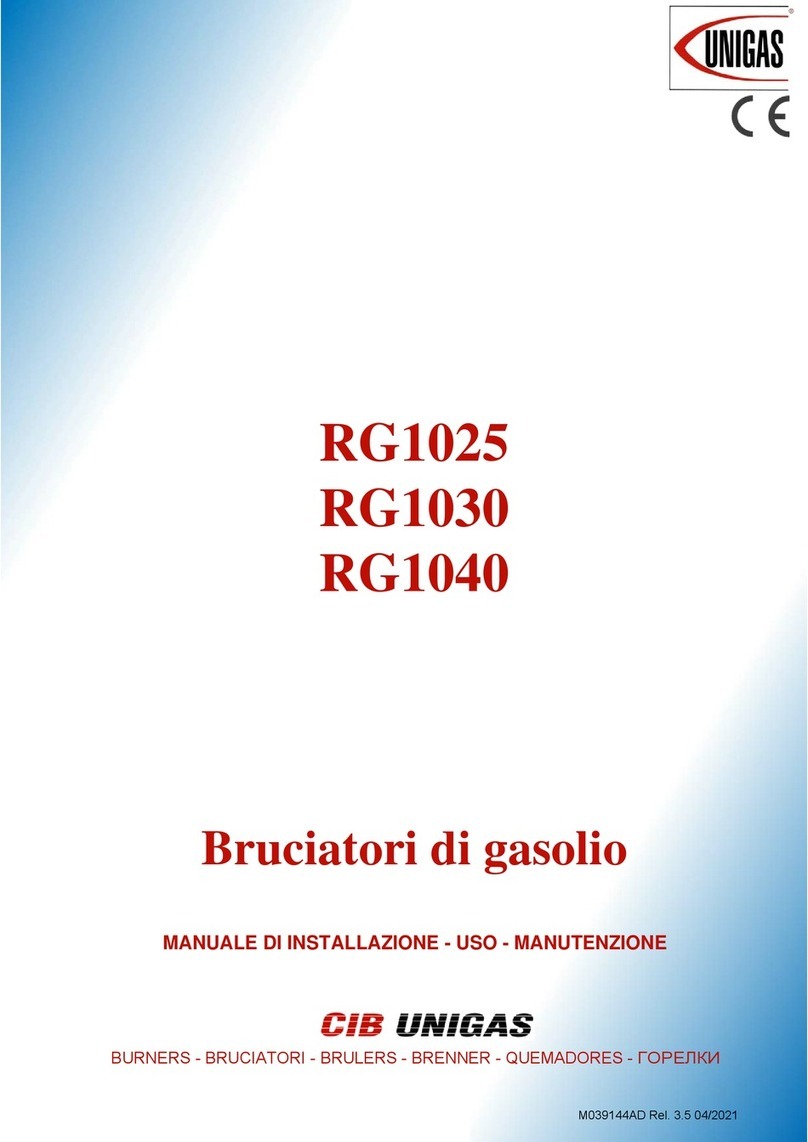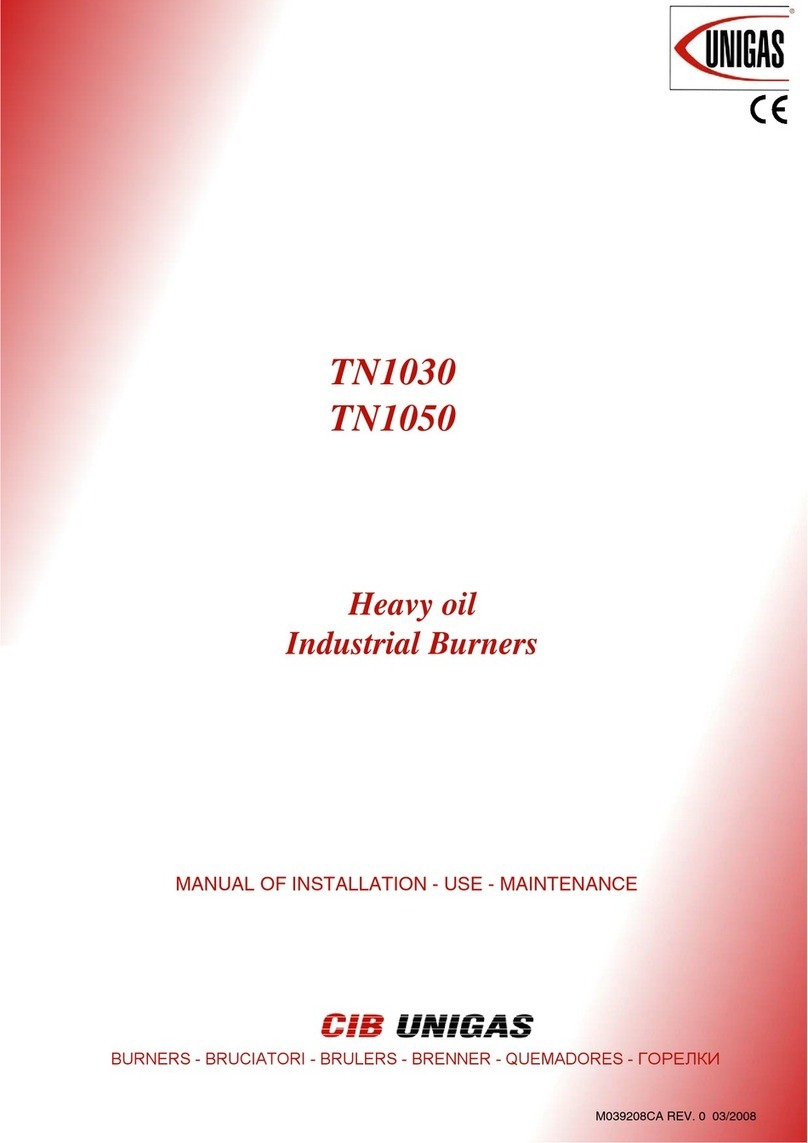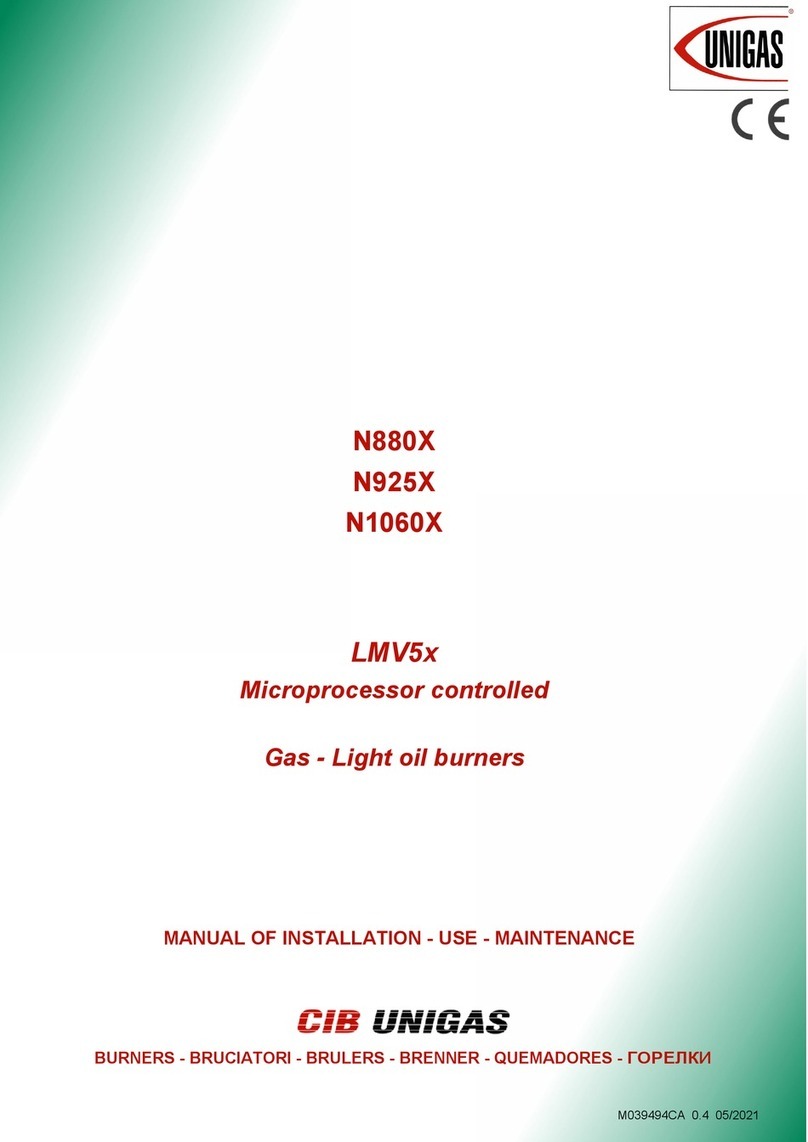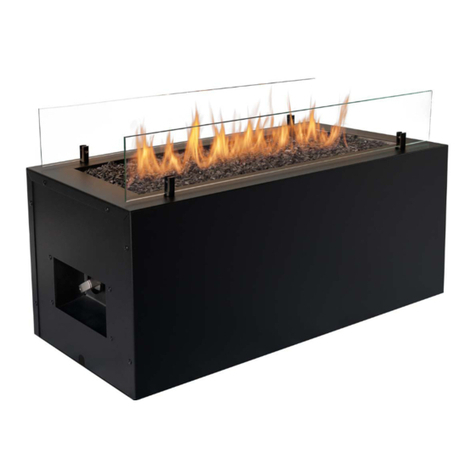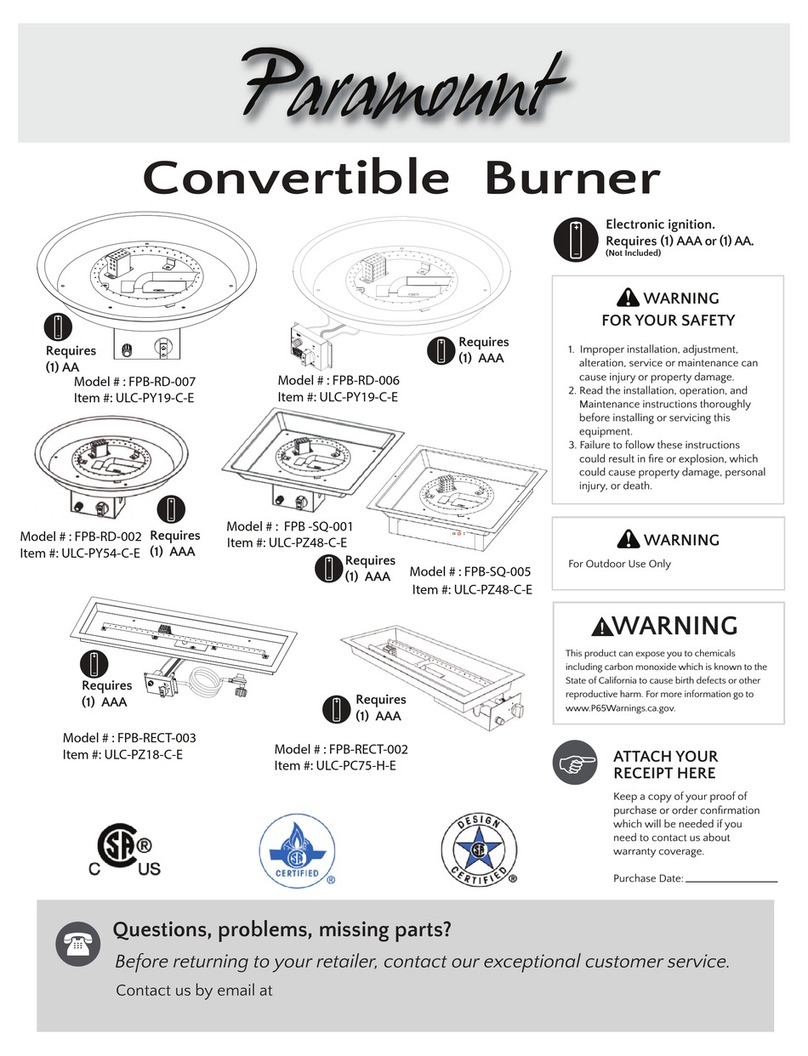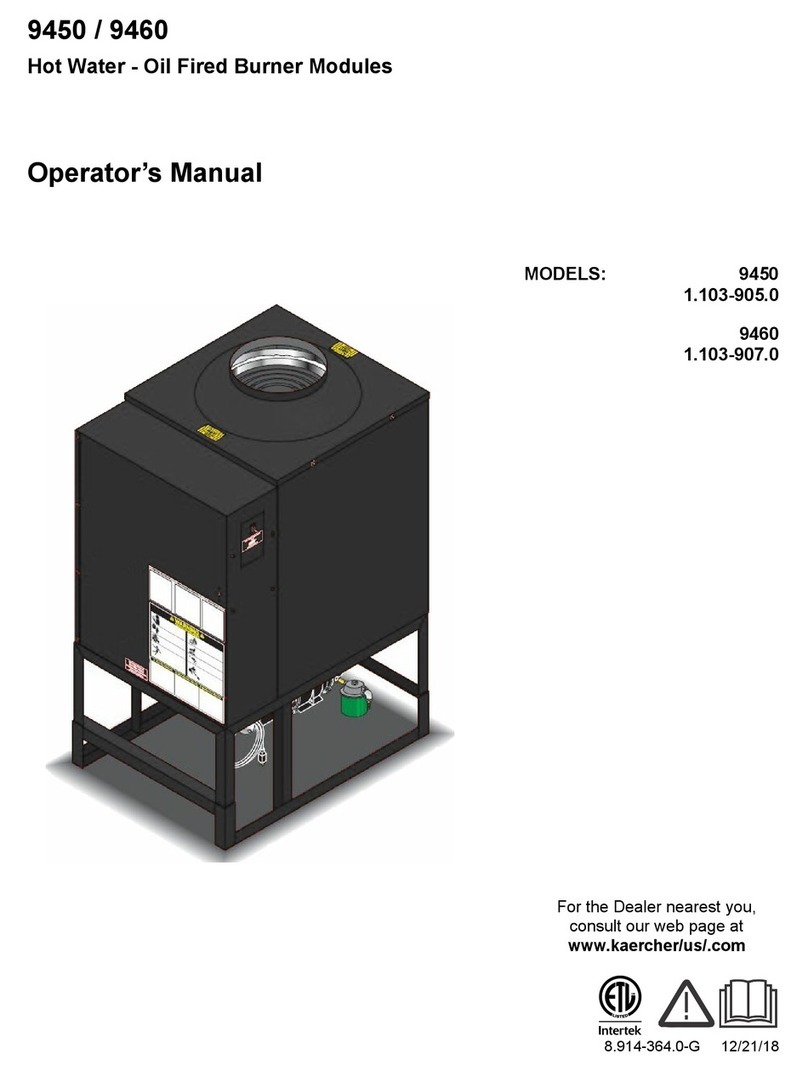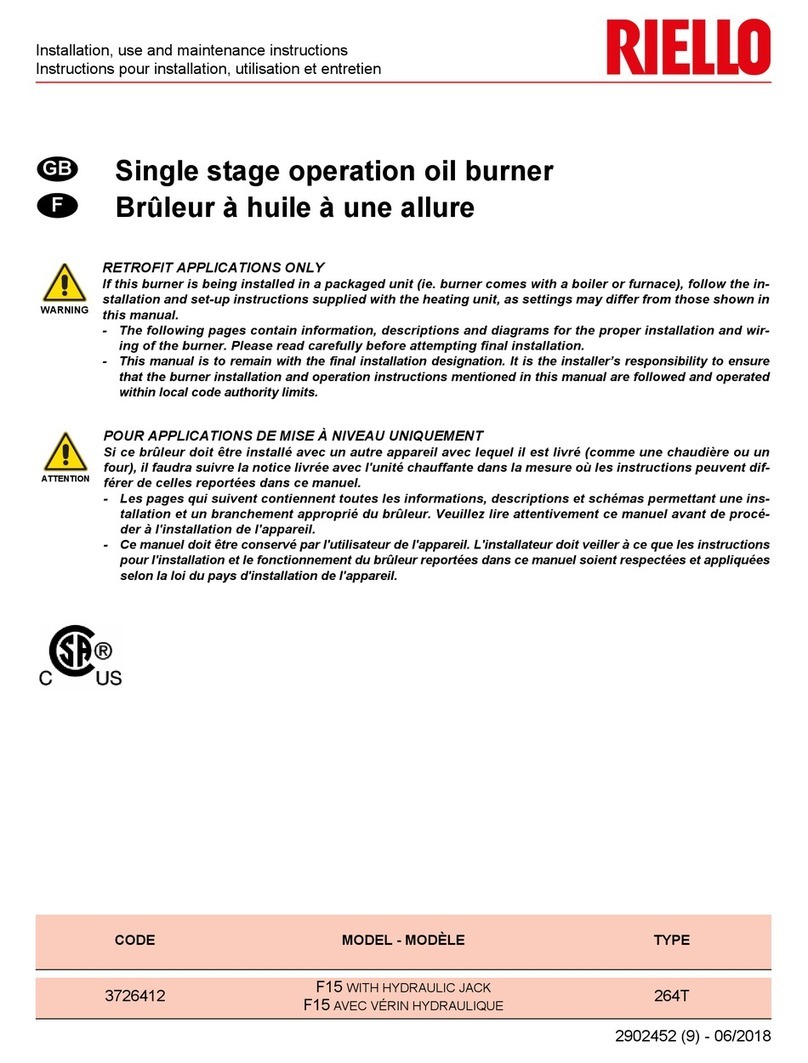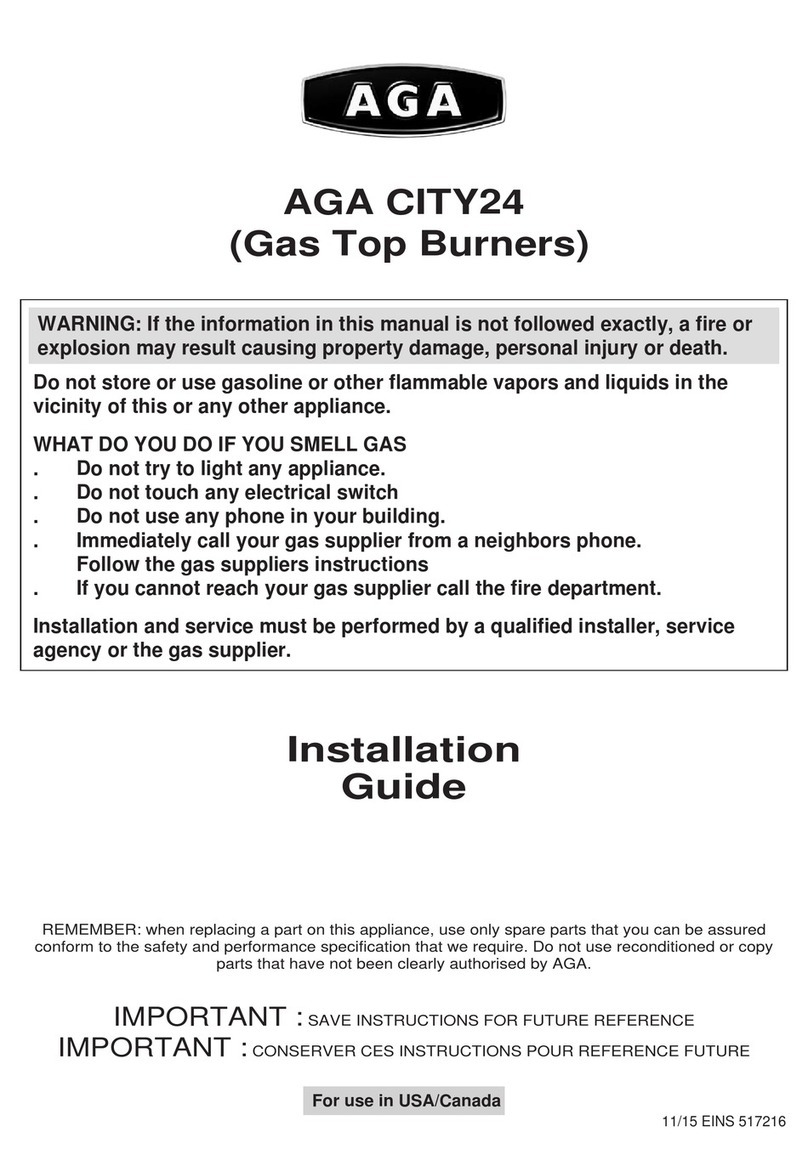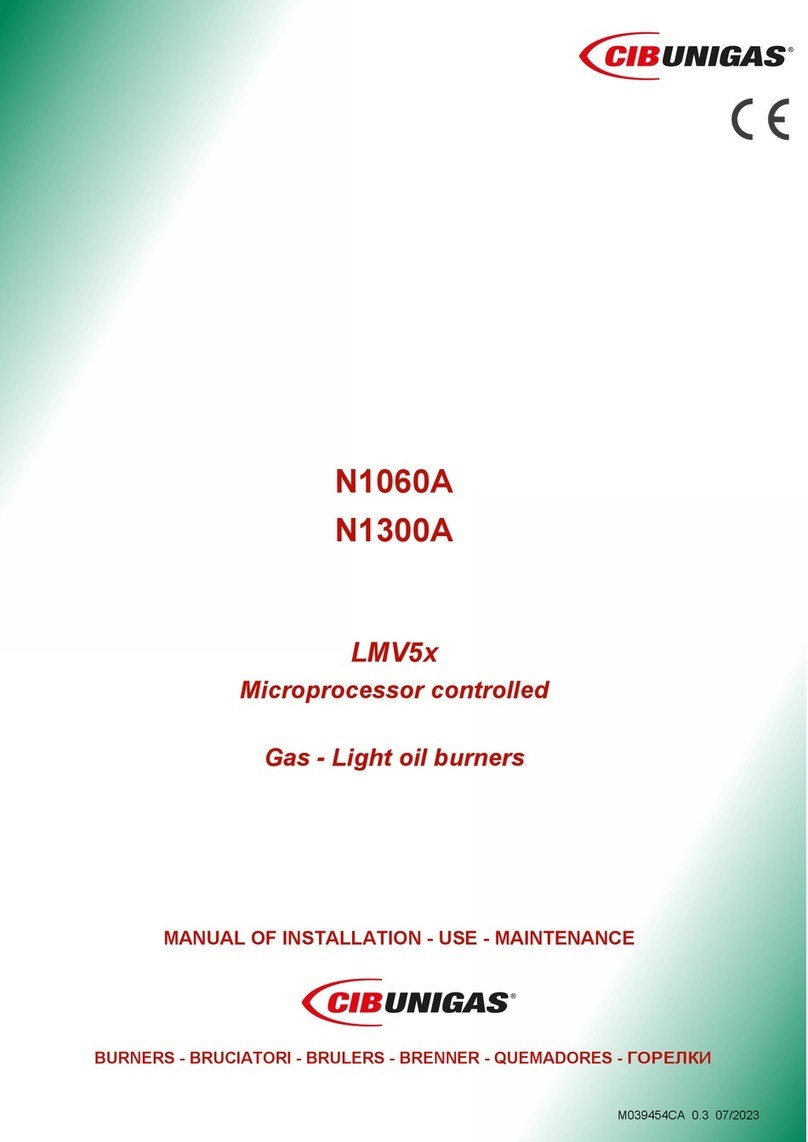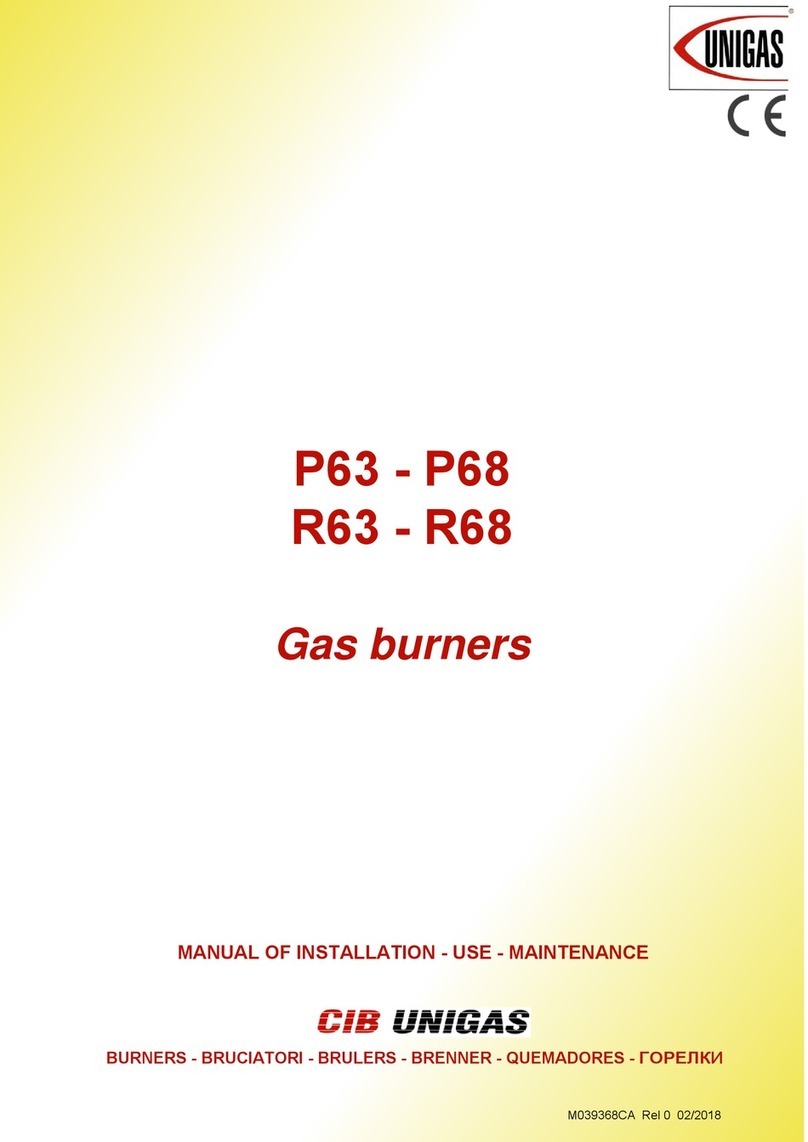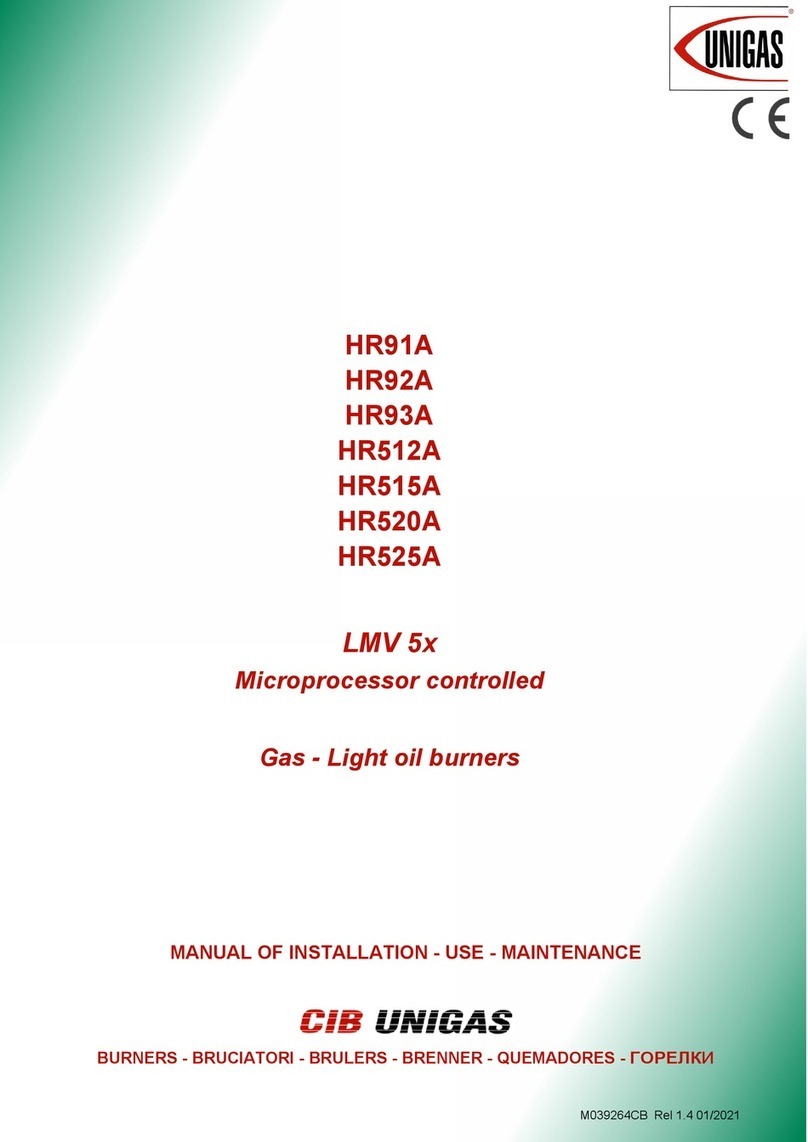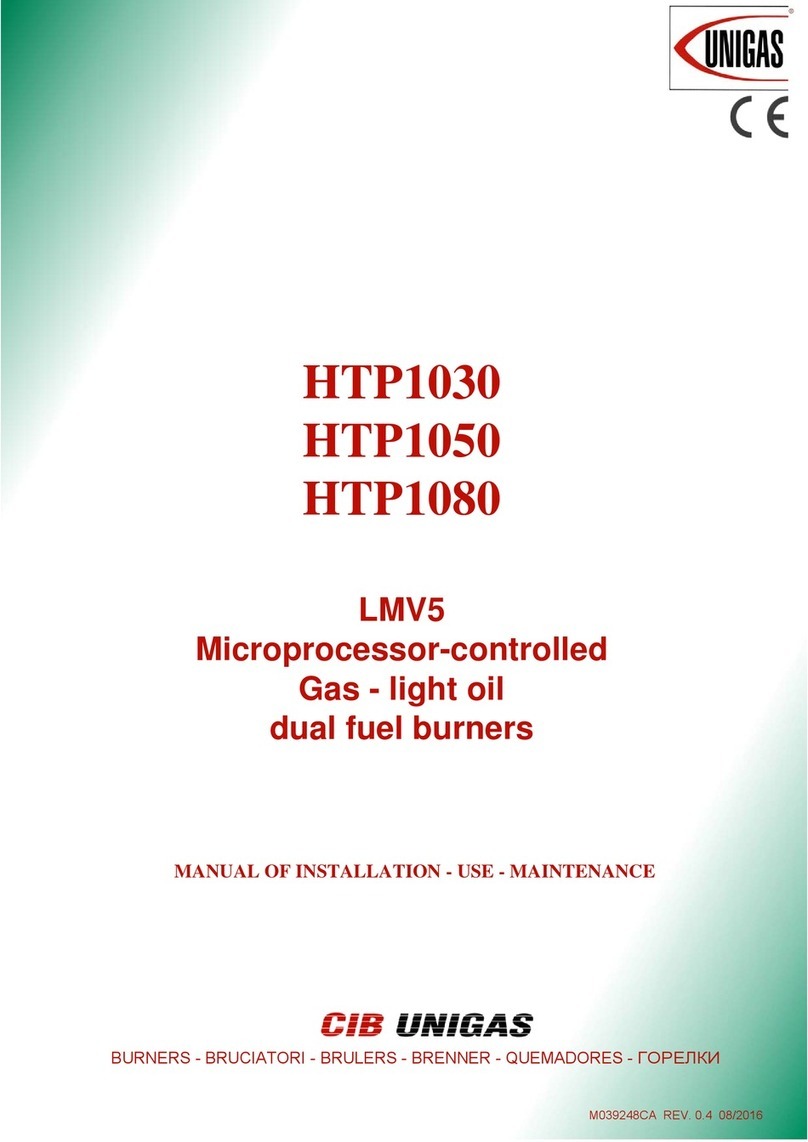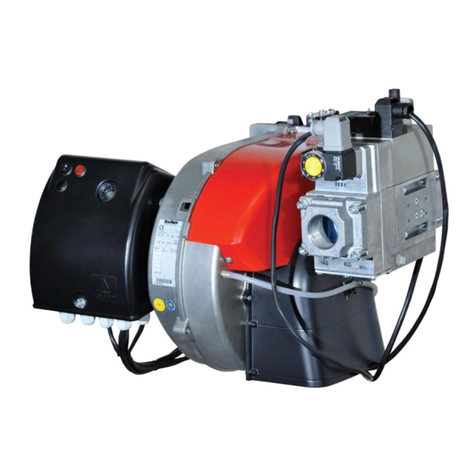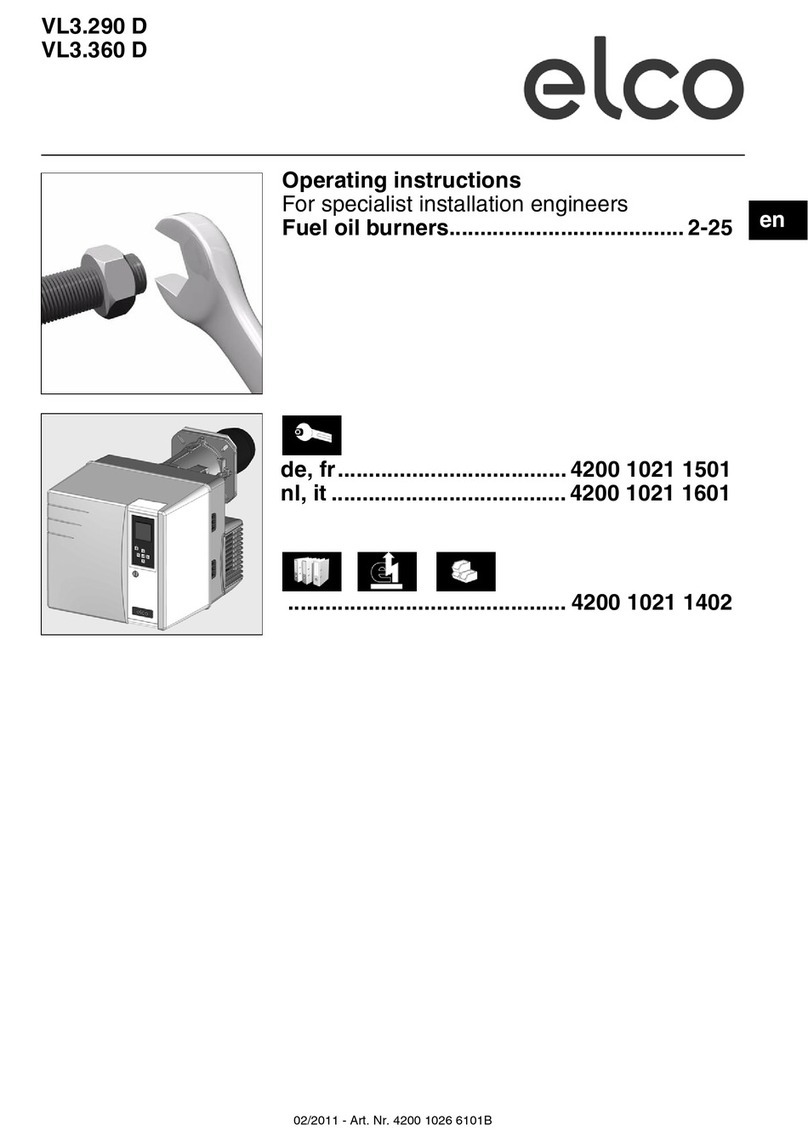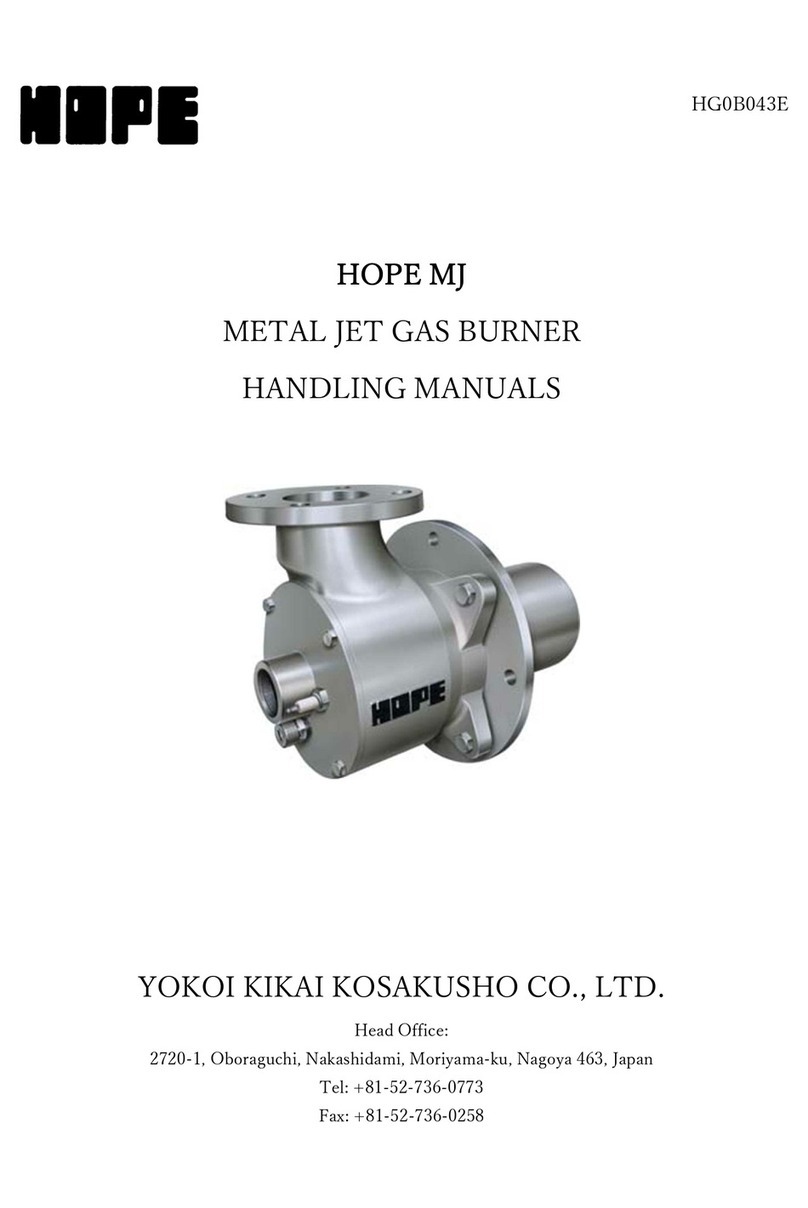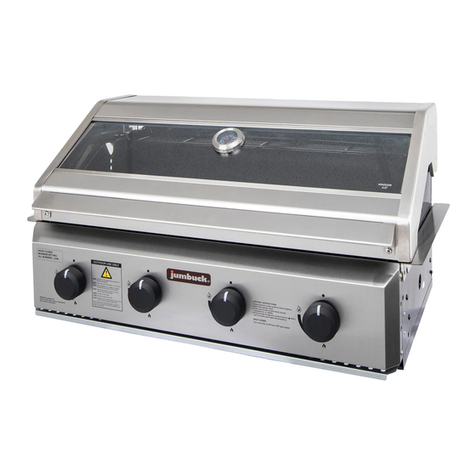
2
DANGERS, WARNINGS AND NOTES OF CAUTION
The following:
Entails the customer’s acknowledgement and acceptance of the com-
pany’s general terms and conditions of sale, in force at the date of
order confirmation and available in the appendix to the current price
lists.
Is intended exclusively for specialised, experienced and trained users
able to operate in conditions that are safe for people, the device and
the environment, and in full compliance with the requirements set out
on the following pages and with current health and safety regulations.
Information regarding assembly/installation, maintenance, replacement
and repair is always and exclusively intended for (and therefore only to be
carried out by) specialised personnel and/or directly by the Authorised
Technical Service
IMPORTANT :
The supply has been made at the best conditions on the basis of the
customer’s order and technical indications concerning the state of the pla-
ces and the installation systems, as well as the need to prepare certain
certifications and / or additional adaptations with respect to the standard
observed and transmitted for each product. In this respect, the manufac-
turer declines any responsibility for complaints, malfunctions, criticalities,
damages and/or anything else consequent to incomplete, inaccurate and/
or missing information, as well as failure to comply with the technical
requirements and installation regulations, initial start-up, operational
management and maintenance.
For proper operation of the device, it is necessary to ensure the readabi-
lity and conservation of the manual, also for future reference. In case of
deterioration or more simply for reasons of technical and operational
insight, contact the manufacturer directly. Text, descriptions, images,
examples and anything else contained in this document are the exclusive
property of the manufacturer. Any reproduction is prohibited.
RISK ANALYSIS
Instruction manual supplied with the burner:
This is an integral and essential part of the product and must not be sepa-
rated from it. It must therefore be kept carefully for any necessary consul-
tation and must accompany the burner even if it is transferred to another
owner or user, or to another system. In the event of damage or loss, ano-
ther copy must be requested from the local customer service centre;
Delivery of the system and instruction manual
.
The supplier of the system is obliged to accurately inform the user about:–
Use of the system;
– any further testing that may be necessary before activating the system;
– maintenance and the requirement to have the system checked at least
once a year by a contractor or other specialised technician.
To ensure periodic monitoring, the manufacturer recommends drawing up
a Maintenance Agreement.
WARRANTY AND LIABILITY
In particular, warranty and liability claims will no longer be valid in the
event of damage to persons and/or property if such damage is due to any
of the following causes:
- Incorrect installation, start-up, use and maintenance of the burner;
- Improper, incorrect or unreasonable use of the burner;
- Operation by unqualified personnel;
- Carrying out of unauthorised changes to the device;
- Use of the burner with safety devices that are faulty, incorrectly applied
and/or not working;
- Installation of untested supplementary components on the burner;
- Powering of the burner with unsuitable fuels;
- Faults in the fuel supply system;
- Use of the burner even after an error and/or fault has occurred;
- Repairs and/or overhauls incorrectly carried out;
- Modification of the combustion chamber with inserts that prevent the
regular development of the structurally established flame;
- Insufficient and inappropriate supervision and care of the burner compo-
nents most subject to wear and tear;
- Use of non-original components, whether spare parts, kits, accessories
and optionals;
- Force majeure.
Furthermore, the manufacturer declines all responsibility for non-
compliance with this manual.
Personnel training
The user is the person, organisation or company that has acquired the
appliance and intends to use it for the specific purpose. The user is
responsible for the appliance and for training the personnel that operate it.
The user:
- Undertakes to entrust the machine to suitably trained and qualified per-
sonnel;
- Must take all measures necessary to prevent unauthorised people gai-
ning access to the appliance;
- Undertakes to adequately inform personnel about application and obser-
vance of the safety requirements, and therefore ensure that they are
familiar with the operating instructions and safety requirements;
- Must inform the manufacturer if any faults or malfunctions of the acci-
dent prevention systems occur, and if there is any suspected danger;
- Personnel must always use the personal protective equipment required
by law and follow the instructions provided in this manual;
- Personnel must observe all danger and caution notices on the
appliance;
- Personnel must not carry out, on their own initiative, operations or inter-
ventions outside their area of expertise;
- Personnel must inform their superiors of any problem and danger that
may arise;
- The assembly of parts of other makes, or any modifications made, may
alter the characteristics of the appliance and may therefore compromise
operational safety. The manufacturer therefore declines all responsibility
for damages arising from the use of non-original parts.
GENERAL INTRODUCTION
The equipment must be installed in compliance with the regulations in
force, following the manufacturer’s instructions, by qualified personnel.
Qualified personnel means those having technical knowledge in the
field of components for civil or industrial heating systems, sanitary hot
water generation and particularly service centres authorised by the
manufacturer.
Improper installation may cause injury to people and animals, or
damage to property, for which the manufacturer cannot be held liable.
Remove all packaging material and inspect the equipment for integrity.
In case of any doubt, do not use the unit - contact the supplier.
The packaging materials (wooden crate, nails, fastening devices, plastic
bags, foamed polystyrene, etc), should not be left within the reach of chil-
dren, as they may prove harmful.
Before any cleaning or servicing operation, disconnect the unit from
the mains by turning the master switch OFF, and/or through the cutout
devices that are provided.
Make sure that inlet or exhaust grilles are unobstructed.
In case of breakdown and/or defective unit operation, disconnect the
unit. Make no attempt to repair the unit or take any direct action.
Contact qualified personnel only.
Units shall be repaired exclusively by a servicing centre, duly authorised
by the manufacturer, with original spare parts and accessories.
Failure to comply with the above instructions is likely to impair the unit’s
safety.
To ensure equipment efficiency and proper operation, it is essential that
maintenance operations are performed by qualified personnel at regular
intervals, following the manufacturer’s instructions.
When a decision is made to discontinue the use of the equipment,
This manual is supplied as an integral and essential part of
the product and must be delivered to the user.
Information included in this section are dedicated both to the
user and to personnel following product installation and
maintenance.
The user will find further information about operating and use
restrictions, in the second section of this manual. we highly
recommend to read it.
Carefully keep this manual for future reference.
WARNING! Failure to comply with this manual, operational
negligence, incorrect installation and unauthorised modifica-
tions will result in the manufacturer’s warranty for the burner
being voided.




















